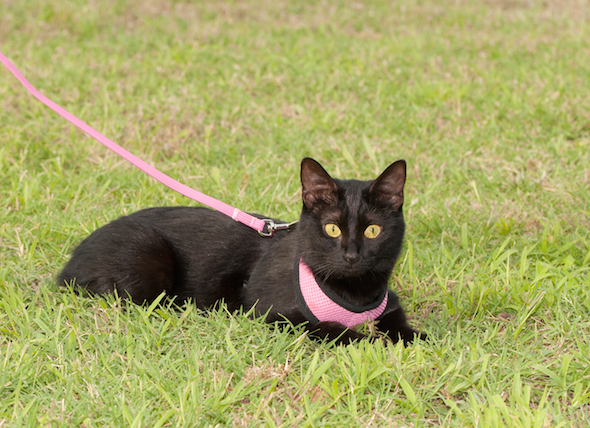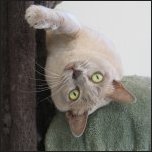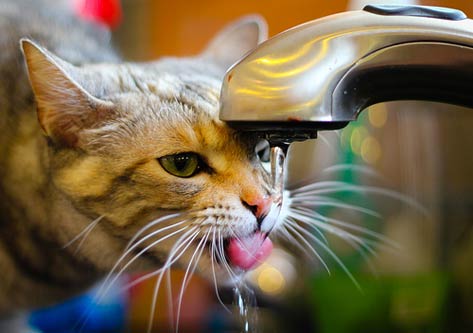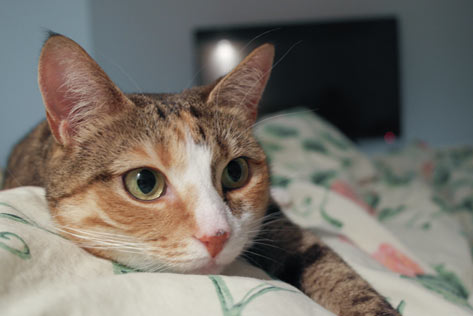Loved the world over, the ever so popular Himalayan cat achieves its beauty from both the Siamese from whom it gets its colored points, and to the Persian, which it most closely resembles. The Himalayan is one of those strictly human engineered breeds that took over ten years to develop by British breeder Brian Sterling-Webb, finally earning breed registration status in 1955. In England, the Himalayan is actually known as the Colourpoint Longhair.
Himalayans have luxurious, long coats that mat easily, therefore requiring daily grooming to keep their coats free of the painful mats that they can get so easily. So make sure that you are willing to give them the care that they need before adopting one into your family. They are gentle, docile cats, but they still love to play as most typical cats do.
Himalayans are actually considered to be a breed of the Persian family, since they most resemble the Persian cat in their body type. But the Himalayan is defined by the point colors, which they get from their Siamese side, and while their points can vary from chocolate, seal, and red to lilac cream lynx, their body colors run in a variety of shades from white to fawn. One of the most beautiful and outstanding features of the Himalayan cat is the deep, vivid, blue eyes that they get from their Siamese ancestors. The Himalayan also has tiny ears set a top a broad head, full large cheeks, a snub nose, and large round eyes, a combination that creates such a sweet yet extreme expression that most people cannot resist them.
However, the creation of the Himalayan was not a simple achievement. The earliest known attempts at the breed actually occurred in Sweden and the United States in the early 1920s. In the United States, it took five long years of dedicated breeding by a couple that was both associated with the Harvard Medical School. And although a successful Himalayan was produced in 1931, named Debutante, there is no record in existence that she gave birth to a new generation of Himalayans. Actually, the breeding experiment was conducted not to produce a new breed of cat but to try and solve some genetic problems.
It wasn't easy producing the perfect Himalayan. It takes a lot more than cross breeding a Siamese to a Persian. The initial consequences of those first breedings produced non-pointed, short haired kittens with copper to yellow eyes, long noses, big ears and a much daintier body than Persian cats are supposed to have. They were literally ugly ducklings.
Initially, only one in sixteen kittens were produced with the desired effects, leaving perseverance, hard work, calendar watching and back crossing to finally do the trick. Today, an overwhelming sixty-two percent of all registered cats are Persians, which includes the beloved Himalayans and color point carriers, and as far as Himalayan cat lovers are concerned, long hair and bright colors are the prevailing vogues.

 How to Take Your Cat for a Walk
By Vanessa Voltolina
How to Take Your Cat for a Walk
By Vanessa Voltolina
 Cat Scratching - How To Stop Your Cat Scratching The Furniture
Cat Scratching - How To Stop Your Cat Scratching The Furnitu
Cat Scratching - How To Stop Your Cat Scratching The Furniture
Cat Scratching - How To Stop Your Cat Scratching The Furnitu
 'Natural' Methods for Controlling Fleas in Cats
By Jennifer Kvamme, DVM
There are a lot of differe
'Natural' Methods for Controlling Fleas in Cats
By Jennifer Kvamme, DVM
There are a lot of differe
 Kidney Failure in Cats
There are a variety of causes to kid
Kidney Failure in Cats
There are a variety of causes to kid
 Arthritis in Cats: Recognizing the Signs and Treating the Disease
By Ashley Gallagher, DVM
A
Arthritis in Cats: Recognizing the Signs and Treating the Disease
By Ashley Gallagher, DVM
A